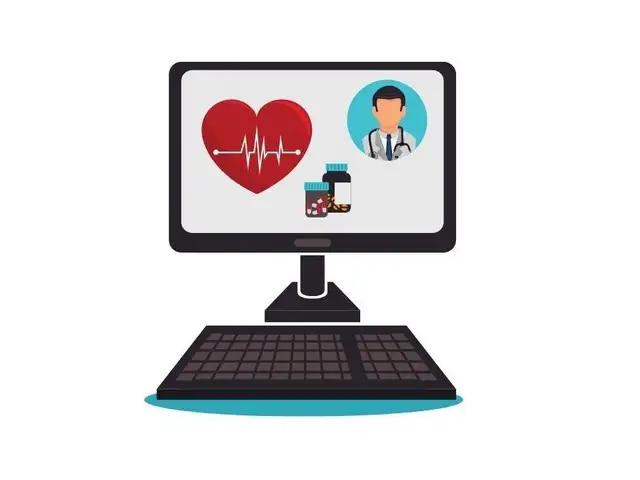Emergency telemedicine is a type of healthcare delivered through telecommunications technology, including telephone, video, and Internet-based communications.
The use of emergency telemedicine in the United States has grown significantly over the last few years. This type of care is important for patients who live far away from hospitals and who cannot get immediate help in person.
Emergency telemedicine can be helpful to patients who are experiencing a medical emergency that prevents them from being able to travel to a hospital or clinic. It helps to provide care during these emergencies when it would otherwise not be available.
Telemedicine can also be used as an alternative for patients who cannot travel due to age, disability or illness but need medical assistance at home or in the office with physicians.
Emergency Telemedicine is a medical service that provides medical care to patients in remote areas.

Different Uses of Emergency Telemedicine:
Remote Caregivers: They provide care for patients who cannot leave their homes.
Remote Clinics: They provide medical services to patients who cannot access traditional health facilities.
Disaster Relief: They provide emergency medical care during disasters and emergencies such as natural disasters, man-made disasters, and pandemics.
What is the difference between emergency and non-emergency calls?
There are many different types of calls that can be made during an emergency. These include:
- Emergency calls are a priority and should be handled as soon as possible.
- Non-emergency calls can be handled in a more leisurely manner.
When calling someone during an emergency, the caller should remain calm and not say anything that will cause distress to the person they are calling. It is important to convey the urgency of their situation without causing any confusion or panic in their voice.
What are the benefits of using telemedicine in cases of emergencies?
Emergency telemedicine is a service that allows patients to receive a consultation by healthcare providers and specialists over the phone instead of visiting the clinic.
Benefits of emergency telemedicine:
- Emergency telemedicine provides access to health care for patients who cannot physically get to a clinic due to work or distance.
- Emergency telemedicine ensures patients’ safety and privacy, as they can consult their doctor from a private location.
- Emergency telemedicine prevents unnecessary medical tests, which is more affordable for patients and doctors.
- Emergency services are available 24/7 for emergency cases, providing better emergency response time.
What are some obstacles to using telemedicine?
Telemedicine is a medical service that provides medical care via telecommunications technology, and it is a type of telehealth. Telemedicine can be used for remote diagnosis and treatment of patients and consultations with specialists by healthcare professionals.
Although the use of telemedicine has been steadily increasing in recent years, the cost and time involved in traveling to a clinic or hospital can still be prohibitive for some patients. In addition, many people have limited access to computers and data services due to low income or lack of internet connectivity at home.
These obstacles can make it difficult for people without internet access or computer skills to use telemedicine services and limit its potential impact on the underserved.
What are some major companies involved in developing emergency telemedicine and instant care?
Some of the major companies involved in developing emergency telemedicine and instant care are:
- Microsoft Corporation
- IBM Corporation
- Qualcomm Incorporated
- Apple Inc.
- Amazon Web Services, Inc.
What barriers prevent people from using emergency telemedicine and instant care?
The barriers that prevent people from using emergency telemedicine and instant care include a lack of awareness, fear of being judged by healthcare providers, lack of trust in the technology, and limited access to the service.
Some barriers include:
- Lack of awareness about how to use emergency telemedicine and instant care services
- Fear of being judged by healthcare providers
- Limited access to the service
- Lack of trust in the technology
Do companies offer services like emergency telemedicine and instant care to people outside their area of expertise?
Hospitals and clinics offer emergency telemedicine services to people who cannot reach the hospital due to distance or other reasons.
Instant care is a service that helps people in emergencies, like when they have a heart attack or need an ambulance. The service is provided by emergency medical teams, paramedics and hospitals.
How can emergency telemedicine be used by patients, especially those who do not have access to healthcare professionals?
Patients can be reached via telephone or video chat with a health care professional. This type of telemedicine may also be used in remote areas where there is no access to healthcare professionals.
Telemedicine has been used for decades, but as technology has evolved, so have the ways that telemedicine can be used. One of the most recent developments in emergency telemedicine is virtual reality (VR). VR allows patients to experience what they would normally not get from an actual visit with a doctor or nurse without having to leave their home or office.
How to Choose Which emergency telemedicine assistant is Right for You?
The key deciding factors when choosing an emergency telemedicine assistant are:
- What kind of services does it offer?
- What kind of experience does it have?
- How much does it cost?
- Does it provide 24/7 customer service?
How were emergency telemedicine and instant care developed for?
Telemedicine and instant care were developed to provide emergency care. With the invention of these new technologies, patients no longer have to travel far for emergency care.
The history of telemedicine dates back to 1986 when a doctor in New York City connected with a patient in Australia through a video conference. 2000, instant care was introduced, and it is now used by more than 80% of hospitals worldwide.
Telemedicine: Telemedicine is often used to provide medical services remotely or over long distances, and it can be achieved through phone calls or video conferencing with experts located nearby or abroad.
Instant Care: Instant Care is an advanced technology that helps doctors diagnose and treat patients without traveling long distances from their homes or offices.
Conclusion
Choosing the right emergency telemedicine assistant for your needs and budget can be a very difficult decision. It is important to know what you want to accomplish to find the right fit.


